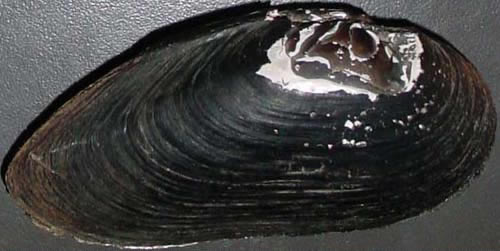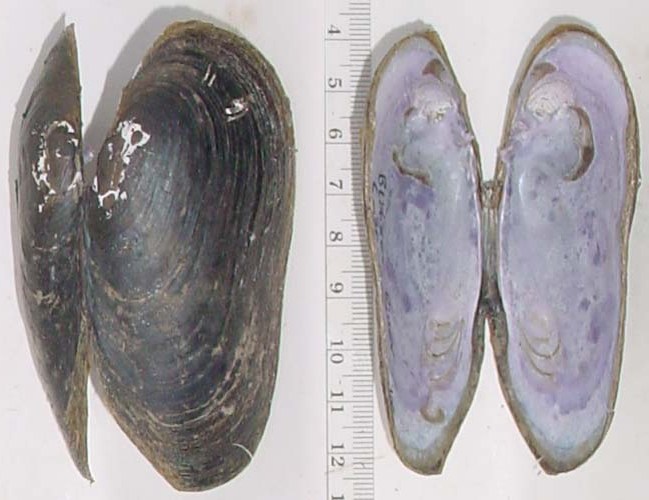
THE XERCES SOCIETY FOR INVERTEBRATE CONSERVATION Aquatic Invertebrates in Pacific Northwest Freshwater Wetlands |
| Identify taxa |
Margaritifera falcata |
The western pearlshell has a longer life expectancy than humans; they can live to be over 100 years old. This invertebrate spends its life filtering fine organics out of the water while it rests in the gravels of fairly clean, clear waters. It can be identified by the black, jelly bean-shaped shell. The shell is pretty thick and strong and the interior of the shell is usually purple, but may be salmon colored (pinkish-orange) in the Klamath basin. However, those colors fade to white over time after the mussel dies. The umbo where the two halves of the shell meet has large teeth. The surface of the shell has a ringed texture but doesn't have a prominent ridge running down one side. The western pearlshell is the most common (although it won't be found in a wetland) of the seven species of freshwater mussels that inhabit the Pacific Northwest, and yet it is also one of the most sensivite. Its sensitivity is primarily due to its dependence on host fish in the family salmonidae for development. Many salmonids, and thus western pearlshells, are seriously threatened by the impacts of damming, agriculture and urbanization. |
Size: xlarge; often up to 5 inches |
 |
© 2007 Xerces Society
Contact info@xerces.org

